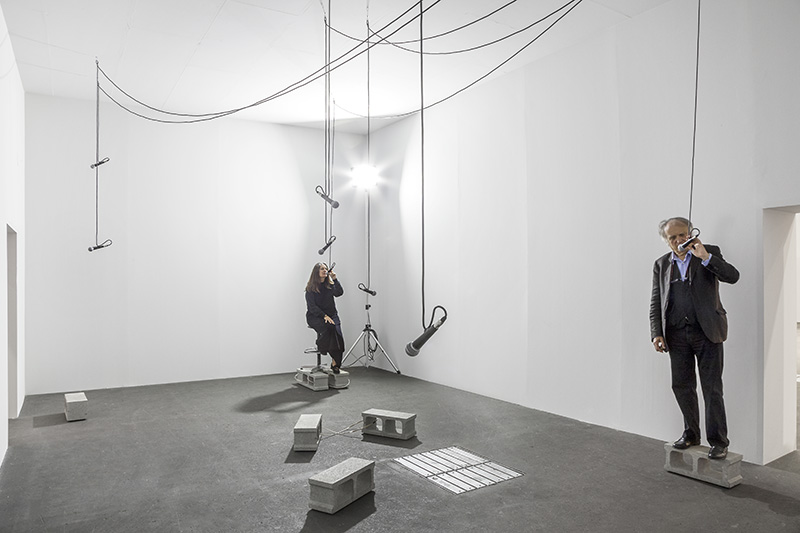ART-PRESENTATION: Gilberto Zorio
 Gilberto Zorio is associated with the Arte Povera generation, which originated in Italy during the mid-60s. Utilising non-traditional and unconventional materials, Zorio was a major exponent of this movement and has continued to play an important role in the development of sculptural practice for over forty years. He is primarily concerned with capturing and conveying forms of energy, experimenting with chemical and mechanical processes and material transformations.
Gilberto Zorio is associated with the Arte Povera generation, which originated in Italy during the mid-60s. Utilising non-traditional and unconventional materials, Zorio was a major exponent of this movement and has continued to play an important role in the development of sculptural practice for over forty years. He is primarily concerned with capturing and conveying forms of energy, experimenting with chemical and mechanical processes and material transformations.
By Efi Michalarou
Photo: Castello di Rivori Archive
A major retrospective devoted to the work of Gilberto Zorio is on presentation at the Castello di Rivoli, this comprehensive and innovative presentation features some of Zorio’s most important works from his early days, including historical installations from the artist’s own private collection. These rare pieces are presented to the public alongside other works from various Collections and those from the Museum’s Permanent Collection. New site-specific installations conceived by Zorio for the third floor of the Castello di Rivoli are exhibited for the first time. Gilberto Zorio was born in 1944 in Andorno Micca, Italy. He entered Turin’s Accademia di Belle Arti in 1963 to study painting. However, he soon moved on to sculpture and had his first solo show of three-dimensional works in 1967 at the Galleria Sperone-Turin. Associated with the Arte Povera Movement, Zorio exhibited in a number of the defining group shows of Arte Povera in 1967 and 1968 as well as the important exhibition “When Attitudes Become Form” all Curated by Germano Celant. He was included in a group exhibition, “Nine Young Artists: Theodoron Awards”, at the Solomon R. Guggenheim Museum in 1969. Around this time, Zorio embarked upon a series dealing with language, “Per purificare le parole”, a theme he would investigate through the early ‘80s. In 1970, Zorio graduated from the Accademia and, in 1971, he began teaching at the Liceo Artistico, Turin. Zorio’s work emphasizes process and alchemy, exploring transformative natural phenomena like evaporation or oxidation and the effects wrought upon materials by these chemical interventions. He has always been preoccupied with the idea of energy. This focus led him to examine the properties of electricity, incorporating a lamp or incandescent tubes in some pieces. In other works, he adopted star and javelin forms—both archetypal constructs intimating energy. Zorio frequently employs fragile materials in his sculpture, creating giant stars from terra-cotta or perching Pyrex alembics containing liquid solutions upon slender steel javelins. He tends to suspend or balance these components in purposely precarious installations, suggesting the tensions and transience of the physical realm. By 1984, he had started another series utilizing a primeval form, that of the canoe, which he made from assorted materials such as pitch or steel. The canoe, along with the star and javelin, became a recurrent motif in Zorio’s oeuvre.
Info: Curator: Marcella Beccaria, Castello di Rivori, Piazza Mafalda di Savoia, Rivoli, Turin, Duration: 2/11/17-18/2/18, Days & Hours: Tue-Fri 10:00-17:00, Sat-Sun 10:00-19:00, www.castellodirivoli.org





